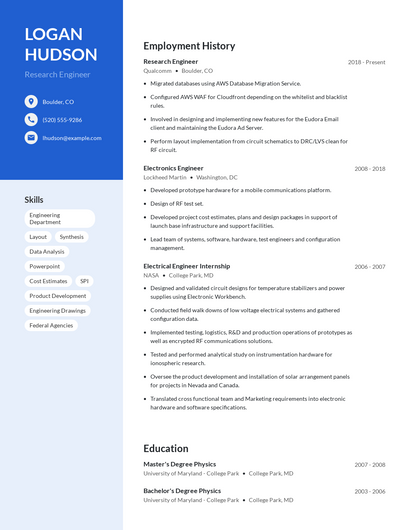
Engineering disasters are often caused by a design flaw. Here are some examples. They include: Design flaws, Systematic failures, Lack of communication, and Shortcuts in the design process. You might have experienced some of the following problems when you are designing a structure or machine.
Design flaws
Engineers are responsible in ensuring safety on a project. Failure to follow procedures can lead to disaster. Often, these errors are preventable. Engineers can avoid making the same mistakes when studying historical engineering failures. But it is important to understand that mistakes cannot always be prevented. Here are a few ways to improve engineering design:
First, look at the engineering project. Were there design flaws? Did it fail because of a certain flaw? Did the design or construction process contain a flaw that led to the disaster? Was the project's safety compromised by the design flaws? Or were the engineers careless or inexperienced when making the decision? These questions will guide your next engineering project.

Systemic failures
We often think of engineering disasters when we think about the problems that can result from poor design and short cuts. Engineering is the science, technology, and art of meeting the needs for society. Engineers and managers have to work together in order to meet these requirements. These shortcuts can lead to unexpected results or systemic failures. Here are some ways engineers could prevent or prevent future failures.
An excellent example of a systemic failing is the New Orleans levee failure in 2005. The Army Corps of Engineers erred in calculating the soil strength of the levee system during construction. They constructed it for low hurricane winds and failed to account for natural sinking. The failure of this levee system can be attributed to inefficiencies, politics, and ineffective construction. Other causes can also contribute to catastrophic failures.
Avoiding the tedious design process
Many of the problems in modern engineering can be traced back to poor design. Engineering disasters are often caused by short cuts, especially when gadgets and buildings are not designed correctly. Although engineers take into account all possible scenarios when tackling a design problem, they still sometimes make mistakes. Failure analysis, however, can help engineers create better designs in the future.
For a variety of reasons, suppliers, manufacturers, as well as contractors, often take shortcuts. These can be anything from miscommunication to technical details to inexperienced pump deployment. Sometimes, budget constraints are the root cause. Suppliers or manufacturers might make cutbacks to save money. Regardless of the reason for the shortcut, it is important to recognize the consequences of these mistakes.

Communication issues
Communication is a key factor in many of the most devastating engineering errors. Ineffective communication can lead to frustration, unreported technical problems, and slipped schedules. Lack of specificity and omissions in messages can cause team members to misunderstand each other, procrastinate difficult conversations, and multitask while talking. To avoid a similar situation, technical experts should make sure to communicate well with each other.
Engineering disasters are rarely the result of engineers not following best practices. They were often caused by inadequate safety protocols or an underestimation. These problems allowed engineers to avoid similar errors and create new guidelines. Learning from past mistakes is never too late. These examples can help you avoid making mistakes in your work.
FAQ
What kinds of jobs are available if I am an engineer?
Engineers are able to find work in almost any industry, such as manufacturing, transport, energy, communications and finance.
Engineers who are specialists in a particular field can often find employment at certain companies or organizations.
For example, electrical engineers may work for telecommunications companies, medical device manufacturers, or computer chip makers.
Software developers may work for websites or mobile app developers.
Computer programmers may work for tech firms like Google, Microsoft, Apple, Amazon, Facebook, or IBM.
What is an Aerospace Engineer's Job?
Aerospace engineer uses their knowledge of aeronautics, propulsion, robotics, and flight dynamics to design aircraft, spacecraft, satellites, rockets, and missiles.
An aerospace engineer could design new aircraft types and fuel sources or create space suits.
Which type of engineer gets the best salary?
The answer would be software engineers because they are the ones who write code for computers. They can also choose the type of project that they wish to work on. Software engineers can work in any industry, but they usually choose to work at tech companies such as Google or Microsoft.
How long does it take for an engineer to become?
There are different routes into engineering. Some people start studying immediately after leaving school, while others decide to go to college first.
Some students will choose to enter a degree program right out of high school. Others will opt for a foundation program that lasts two years.
They could then pursue a three-year, or four-year, honors degree. A master's degree could be an option.
Consider what you plan to do with your life after graduation when deciding which route you will take. Are you going to be a teacher or a worker in the industry?
The length of time it takes to complete each stage varies depending on the university you attend and whether you're doing a full-time or part-time course.
However, it is important to keep in mind that the amount of experience gained after completing a qualification does not always correlate with how long it took. So even if you only spend one year at college, it doesn't mean you'll have all the skills needed to work as an engineer.
Statistics
- Job growth outlook through 2030: 9% (snhu.edu)
- 8% Civil engineers solve infrastructure problems. (snhu.edu)
External Links
How To
Engineer salaries in the United States
The average engineer salary in the US is $100k per year. This includes base pay and bonuses, as well benefits.
In May 2014, the median annual wage for all workers stood at $50,090
This is an increase of 48% from $38,671 in 2013
The most common job titles were Software Developer ($65,000), Computer Programmer ($60,000) and Systems Analyst ($55,000).
Salary ranges greatly depending on where you live. New York City salary ranges from $80,000 to $120,000
San Francisco engineers are likely to earn $90,000-$150,000.
Washington DC residents could expect to make between $85,000-$130,000.